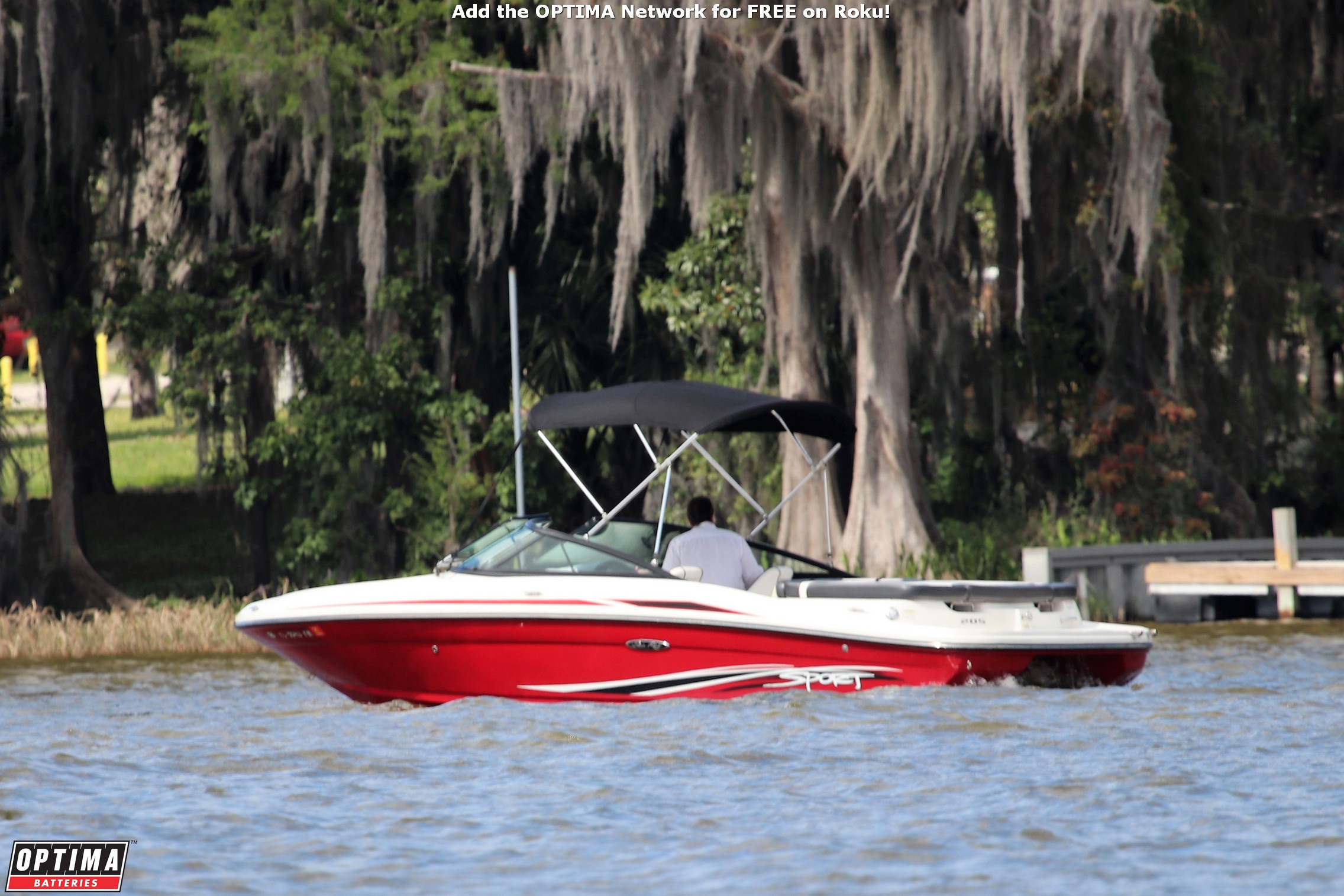What Size Battery For My Boat?

- Sponsor
- OPTIMA Batteries
- Location
- Harris Chain of Lakes, Florida


If you've spent any time on the water, you know the wide variety of boats that are out there- fishing, jet, pontoon, ski, wake, center console, sail and the list goes on. There's nearly as many different types of batteries to match all those types of boats, which can make finding the right sized battery for your boat a challenge. We can help by starting with the basics.
If your boat already has a battery, what size is it? If you bought it new with that battery, you'll probably want to replace it with a battery that at least matches the original battery's specifications, if not exceed them. There are two specifications you'll want to pay close attention to as it relates to your battery- cranking amps and reserve capacity.
Cranking amps (CA), also measured in marine cranking amps (MCA) or cold cranking amps (CCA), helps you understand how much energy your battery can deliver in a short burst of power, typically to start an engine. Most boat engine manufacturers will list specifications for cranking amps in some form (CA, MCA or CCA) for their engines and that information is readily available online or from the engine manufacturer. We recommend meeting or exceeding the manufacturer's recommendation, although you don't have to go crazy. If your engine needs 500 MCA, you don't need to overspend on a 1000 MCA battery.
The other specification is reserve capacity, typically measured in amp hours (Ah) or reserve capacity (RC). Generally speaking, these specifications describe the amount of energy a battery is capable of delivering over an extended period of time and the larger the number, the more energy they have available. Some boat manufacturers (and even a few engine manufacturers) will have specifications in this regard, that you should also meet or exceed.
Once you understand what the manufacturer's energy recommendations are for your boat and/or engine, you should look at the storage location for your battery to understand how much space you have for a battery. Some boat batteries are stored in external plastic containers or boxes, while others may have a special storage area integrated into the design of the boat. Some of these storage areas may be able to hold a physically larger battery than the one you have in your boat now, while others may be maxed out already with the battery you currently have.
Most boaters will use 12-volt lead-acid batteries in their boats. If your boat uses 6-volt, 8-volt or some other type of battery that isn't 12-volt, you can still read the next few paragraphs, but know that OPTIMA doesn't offer replacements in those voltages for your boats.
Lead-acid batteries are most-commonly found in either flooded or AGM form. Flooded lead-acid batteries are the most-widely available boat batteries on the planet and are so named, because the positive & negative plates hang in a free-flowing electrolyte solution. Flooded batteries also tend to be the most-affordable type of lead-acid batteries, from the standpoint of the initial purchase price. However, they also tend not to last as long as their AGM counterparts and are more susceptible to damage, especially from vibration and impacts (think driving over railroad tracks on the trailer or running the Haulover Inlet).
AGM stands for "Absorbed Glass Mat" and instead of the positive & negative plates hanging in a bath of electrolyte, the battery acid is instead absorbed into fiberglass matting in between the plates. While these batteries tend to have a higher initial cost than a flooded lead-acid battery, they can last far longer. In the case of OPTIMA batteries, our BLUETOP boat batteries can last up to three times as long as a flooded lead-acid battery. They are also far more resistant to damage from vibration (up to 15x), than flooded batteries.
Some boaters want the smallest, lightest boat they can get away with using, so they can access shallow waterways. For many others, battery weight isn't a concern and they have plenty of space for larger batteries. In those boats, we might recommend going with a larger battery. The reason is that the more deeply a lead-acid battery is discharged, the fewer cycles it will be able to deliver. If your boating involves a lot of time spent with the radio turned up and the engine turned off, you'll definitely want a larger battery (more reserve capacity) and one designed for deep-cycle use.
Whether you just need a 34M BLUETOP boat starting battery or a big D31M BLUETOP designed for starting and deep-cycle use, you can order factory-direct today with free shipping anywhere in the lower-48 States.
